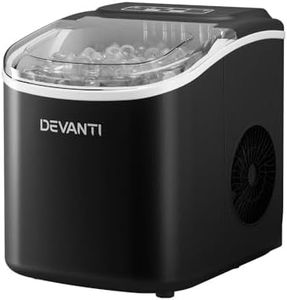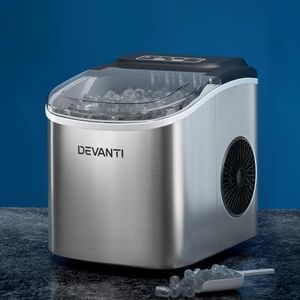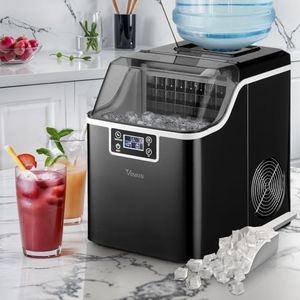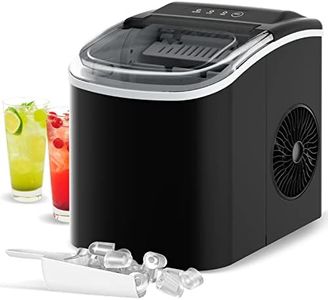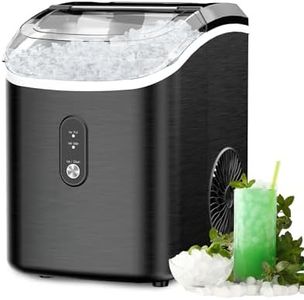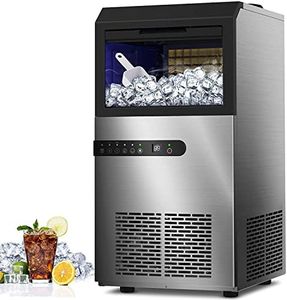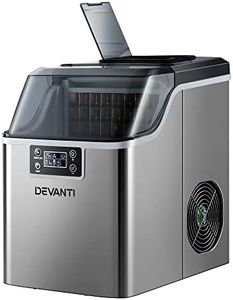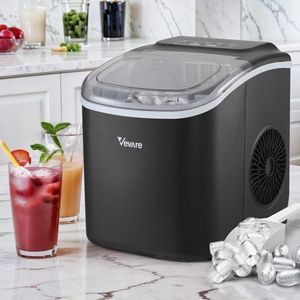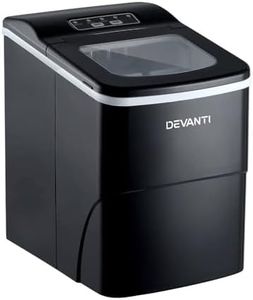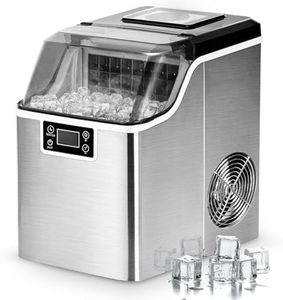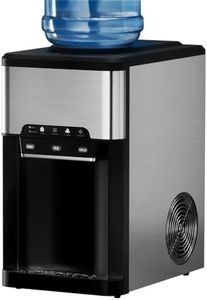We Use CookiesWe use cookies to enhance the security, performance,
functionality and for analytical and promotional activities. By continuing to browse this site you
are agreeing to our privacy policy
10 Best Smallest Ice Maker
From leading brands and best sellers available on the web.By clicking on a link to a third party's website, log data is shared with that third party.
Buying Guide for the Best Smallest Ice Maker
Choosing the right small ice maker can make your daily life easier, whether you want it for your kitchen, RV, office, or home bar. Smaller models are designed for portability and convenience but still vary in performance, size, and features. It's important to think about where you'll use it, how much ice you'll need at a time, and how often you'll use the machine. The best product for you is the one that fits seamlessly into your space and keeps up with your ice needs without taking up much room.Physical DimensionsPhysical dimensions refer to the actual size of the ice maker and are important because they determine where you can place the machine. Some are extremely compact and can fit on a countertop or even in a small RV, while others, though still considered 'small', might require a bit more space. You'll generally find widths ranging from about 8 to 14 inches. Very small spaces will need the most compact versions, while slightly larger spaces can handle the mid- to upper-end of this range. Measure your intended location before shopping and make sure there's enough room for both the machine and ventilation.
Ice Production CapacityThis measures how much ice the machine can make in a 24-hour period. It's important because it shows how much ice you can expect, especially if you regularly entertain guests or need steady access to ice for personal use. Entry-level small machines may produce 20-26 pounds per day, while larger compact models can approach 30 pounds. For personal use or couples, the lower range usually suffices. For small gatherings or shared spaces, a higher daily capacity may be preferred.
Ice Cycle TimeCycle time is how long the machine takes to produce one batch of ice, usually measured in minutes. It matters because a shorter cycle means you'll get fresh ice more quickly. Most small ice makers produce a batch in 6-15 minutes. If you need to serve drinks frequently or dislike waiting, choose a model with a faster cycle. For less frequent needs, a longer cycle time may not be a problem.
Ice Shape and Size OptionsDifferent machines produce different shapes of ice, such as bullet, nugget, or cube, and some allow you to select the size of the pieces. This matters because certain drinks or uses might benefit from specific shapes or sizes—bullet ice is gentler on teeth, while nugget ice is popular for chewing. Many small machines create bullet-shaped ice in two or three sizes. Pick a machine with adjustable ice size if you like more control over your drink's chill.
Water Reservoir SizeThe water reservoir is the container the machine draws from to make ice. Its size influences how often you'll need to refill it. Small reservoirs, usually between 1 to 2 liters, will need more frequent refilling, while larger ones offer more convenience for extended use. If you don't mind topping up often, a small reservoir is fine. For less hassle, look for a slightly larger tank.
Ease of Cleaning and MaintenanceThis refers to how simple it is to keep the machine clean and operating well, which is important for hygiene and long-term reliability. Features that help include drain plugs for easy emptying and removable baskets or parts for washing. Smaller models are often easier to clean, but always look for clear instructions and accessible components. If you prefer low-maintenance appliances, prioritize simple, user-friendly designs.
Portability and WeightThe ease with which you can move the machine matters if you plan to take it on trips, use it in an RV, or stow it away when not in use. The lightest models may weigh under 20 pounds and often have handles or compact forms. If you expect to move the ice maker frequently, favor models labeled as lightweight and portable.
